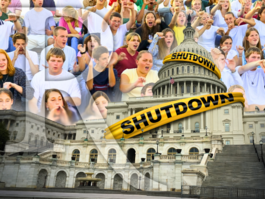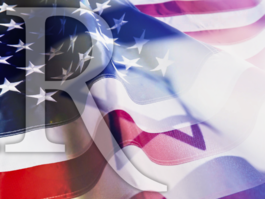86% Concerned About Threat to Chesapeake Bay
Sponsored by NumbersUSA
Residents of the Chesapeake Bay watershed region are worried that development in the region – which has added 6 million residents in the past four decades – threatens the environment and their quality of life.
A new national telephone and online survey by Rasmussen Reports and NumbersUSA finds that 86% of Likely Voters in the Chesapeake watershed region are concerned about the trend that has seen nearly 5,200 square miles of farmland and wildlife habitat in the watershed permanently converted into housing, shopping malls, roads, and other urban and suburban development. That includes 47% who are Very Concerned. Just 11% of voters in the Chesapeake watershed region aren’t concerned about the development trend. (To see survey question wording, click here.)
The Chesapeake Bay watershed stretches from upstate New York down to Virginia. Eighty percent (80%) of voters in the region are concerned about the level of population growth in the Chesapeake watershed, including 39% who are Very Concerned. Only 17% aren’t concerned about the region’s population growth.
(Not getting our eNewsletter? Sign up HERE. Already signed up? Try adding updates@rasmussenreports.com to your contacts or whitelisting us. Still having trouble – email subscriptions@rasmussenreports.com. If it's in the news, it's in our polls).
Rasmussen Reports updates are also available on Twitter or Facebook.
The survey of 1,030 U.S. Likely Voters in the Cheapeake watershed was conducted on October 17-24, 2025 by Rasmussen Reports and NumbersUSA. The margin of sampling error is +/- 3 percentage points with a 95% level of confidence. Field work for all Rasmussen Reports surveys is conducted by Pulse Opinion Research, LLC. See methodology.
While 15% of Chesapeake watershed voters say that, generally speaking, the additional development and population growth has made their region a better place to live, more than twice as many – 39% – say it’s made the area a worse place to live. Thirty-one percent (31%) say additional development and population growth in the region has not had much of an effect on their quality of life and 15% are not sure.
The U.S. population is growing by about 2 million people each year, with immigration accounting for most of the growth in the whole country, as well as in the Chesapeake Bay watershed. Fifty-two percent (52%) of Chesapeake watershed voters believe the government should reduce immigration to slow population growth in the region and nation. Twenty-nine percent (29%) want to keep immigration and population growth at current rates, while just five percent (5%) want to increase immigration and population growth and 14 are not sure.
Among other findings of the Rasmussen Reports/NumbersUSA survey of Likely Voters in the Chesapeake watershed:
– A majority (52%) believe that In terms of such environmental issues as air quality, open space and traffic congestion, the impact of recent development has been mostly harmful in the region. Just 14% think the impact has been mostly beneficial and 20% say the impact in terms of environmental issues did not have much of an effect. Fourteen percent (14%) are not sure.
– Sixty-one percent (61%) think that the environmental impact of development on the Chesapeake Bay itself has been mostly harmful, in terms of water quality, fish and shellfish stocks. Fourteen percent (14%) believe the development has been mostly beneficial to the Chesapeake Bay, 13% say it did not have much of an effect and another 13% are not sure.
– A whopping 92% consider it important to protect the remaining farmland, forests, wetlands, and open spaces within the Chesapeake Bay watershed from development, including 68% who say it’s Very Important.
– Seventy-five percent (75%) say it is unethical to pave over and build on good cropland and wildlife habitat, while just 16% believe that the need for more housing is a legitimate reason to eliminate cropland and wildlife habitat.
– The U.S. Department of Agriculture calculates that in recent decades urban sprawl has destroyed 43 million acres of farmland and natural habitat in the U.S., an area about equal in size to New England. Eighty-seven percent (87%) believe it would be a problem if this trend were to continue, including 56% who think it would be a major problem.
– The Census Bureau projects at current rates the U.S. population could grow by more than 100 million over the rest of this century. Sixty percent (60%) of Chesapeake watershed voters believe this amount of population growth would make their community and region worse places to live. Sixteen percent (16%) think such growth would make the area a better place to live, 12% say it would not make much difference and 12% are not sure.
A narrow majority of voters agree with impeachment proceedings against a federal judge involved in the Biden administration’s “Arctic Frost” investigation that secretly targeted Republicans in Congress.
As a government shutdown enters its second month, Congress has become increasingly unpopular.
Additional information from this survey and a full demographic breakdown are available to the public as well as to Platinum Members.
Please sign up for the Rasmussen Reports daily e-mail update (it’s free) or follow us on Facebook. Let us keep you up to date with the latest public opinion news.
The survey of 1,030 U.S. Likely Voters in the Cheapeake watershed was conducted on October 17-24, 2025 by Rasmussen Reports and NumbersUSA. The margin of sampling error is +/- 3 percentage points with a 95% level of confidence. Field work for all Rasmussen Reports surveys is conducted by Pulse Opinion Research, LLC.
Rasmussen Reports is a media company specializing in the collection, publication and distribution of public opinion information.
We conduct public opinion polls on a variety of topics to inform our audience on events in the news and other topics of interest. To ensure editorial control and independence, we pay for the polls ourselves and generate revenue through the sale of subscriptions, sponsorships, and advertising. Nightly polling on politics, business and lifestyle topics provides the content to update the Rasmussen Reports web site many times each day. If it's in the news, it's in our polls. Additionally, the data drives a daily update newsletter and various media outlets across the country.
Some information, including the Rasmussen Reports daily Presidential Tracking Poll and commentaries are available for free to the general public. Subscriptions are available for $4.95 a month or 34.95 a year that provide subscribers with exclusive access to more than 20 stories per week on upcoming elections, consumer confidence, and issues that affect us all. For those who are really into the numbers, Platinum Members can review demographic crosstabs and a full history of our data.
To learn more about our methodology, click here.





